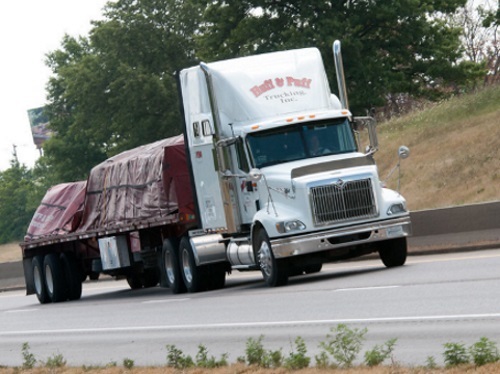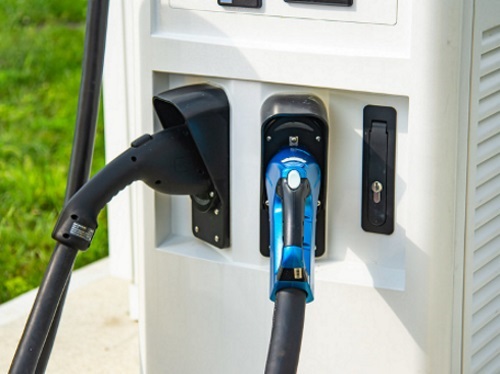FEDERAL ACTION
Public transit gets $3.7B to woo riders, adopt green fleets – AP
Secretary Pete Buttigieg and the $560 billion investment in America’s transportation infrastructure – CBS’s 60 Minutes
COVID-19
TSA extends the travel mask mandate through April 18 – NPR
Since border reopening, car crossings up to pre-pandemic levels, pedestrians lag at AZ ports – KJZZ Radio
INFRASTRUCTURE RESILIENCE AND SUSTAINABILITY
Minnesota DOT ‘Rejuvenating’ Living Snow Fences – AASHTO Journal
Survey Paints Clear Picture of Tomorrow’s Infrastructure Needs – Government Technology
Proposed Ballot Measure Would Require L.A. To Enforce Own Mobility Plan – Planetizen
AIR QUALITY
First digital tool to help reduce commuter carbon emissions – IT Brief New Zealand
Electrify diesel trucks serving the ports to build a cleaner supply chain – Seattle Times (Opinion)
ENVIRONMENTAL JUSTICE
N.Y. can’t squander this shot at environmental justice – NY Daily News (Opinion)
NATURAL RESOURCES
KYTC Prepares to do Battle with ‘Noxious Weeds’ – AASHTO’s Center for Environmental Excellence
Oregon bill allocates $7 million to curb collisions between cars, wildlife – Baker City Herald
New machine to pick up trash on I-90 this spring – Idaho Transportation Department
NCDOT Calls on Public to Help Decrease Litter on Local Highways – WWAY-TV
HEALTH AND HUMAN ENVIRONMENT/ACTIVE TRANSPORTATION
Six Things to Know About the Greater Hartford Mobility Study – Hartford Courant
Grand Junction to conduct new study for increasing mobility – KREX-TV
Key local road projects in The Heights, Montrose make way for bike lanes – KTRK-TV
City wants to make scooters permanent mode of transportation in downtown area – Lincoln Journal Star
NCDOT announces updates to state bike routes after calls for safer streets – Daily Tar Heel
Iowa City, Coralville, and Tiffin to connect existing bike trails to increase bike access – Daily Iowan
TRB RESOURCES/ANNOUNCEMENTS
Workshop: Grid Integration of EV Charging Networks – AASHTO Journal
TRB Webinar: Creating Inclusive Mobility – TRB
Mobility21 Smart Mobility Seminar on March 18: Self-driving technology and “Trust” – Can a driving simulator help? – Carnegie Mellon University (link to registration)
Public Attitudes Tracker: Energy Infrastructure and Energy Sources Autumn 2021 – UK Department for Business, Energy & Industrial Strategy (Link to PDF)
FEDERAL REGISTER NOTICES
Proposed 2022 Renewal of Memorandum of Understanding (MOU) Assigning Certain Federal Environmental Responsibilities to the State of California, Including National Environmental Policy Act (NEPA) Authority for Certain Categorical Exclusions (CEs) – FHWA (Notice)
California State Motor Vehicle Pollution Control Standards; Advanced Clean Car Program; Reconsideration of a Previous Withdrawal of a Waiver of Preemption; Notice of Decision – EPA (Notice of decision)
White House Environmental Justice Advisory Council; Notification of Virtual Public Meeting – EPA (Notice)
Air Plan Approval; NC; Removal of Transportation Facilities Rules for Mecklenburg County – EPA (Final rule)
Air Plan Approval; Kentucky; Fugitive Emissions Rule – EPA (Proposed rule)
Oregon: Authorization of State Hazardous Waste Management Program Revisions – EPA (Final authorization)
Request for Nominations of Candidates for the National Environmental Education Advisory Council – EPA (Notice)
Agency Information Collection Activity: Request for Comments: Bipartisan Infrastructure Law Airport Terminal and Tower Project Information – FAA (Notice)
National Boating Safety Advisory Committee; March 2022 Meeting – Coast Guard (Notice)
City of River Falls Municipal Utilities; Notice of Application Accepted for Filing, Soliciting Motions To Intervene and Protests, Ready for Environmental Analysis, and Soliciting Comments, Preliminary Terms and Conditions, and Preliminary Fishway Prescriptions – Federal Energy Regulatory Commission (Notice)
Transcontinental Gas Pipe Line Company, LLC; Notice of Availability of the Draft Environmental Impact Statement for the Proposed Regional Energy Access Expansion – Federal Energy Regulatory Commission (Notice)
Notice of Proposed Withdrawal and Opportunity for a Public Meeting, Arizona – Bureau of Land Management (Notice)
Notice of Colorado’s Rocky Mountain District Resource Advisory Council Public Meetings – Bureau of Land Management (Notice)
Onshore Oil and Gas Operations and Coal Trespass – Annual Civil Penalties Inflation Adjustments – Bureau of Land Management (Final rule)
Call for Nominations for the Glen Canyon Dam Adaptive Management Work Group Federal Advisory Committee – Bureau of Reclamation (Notice)


